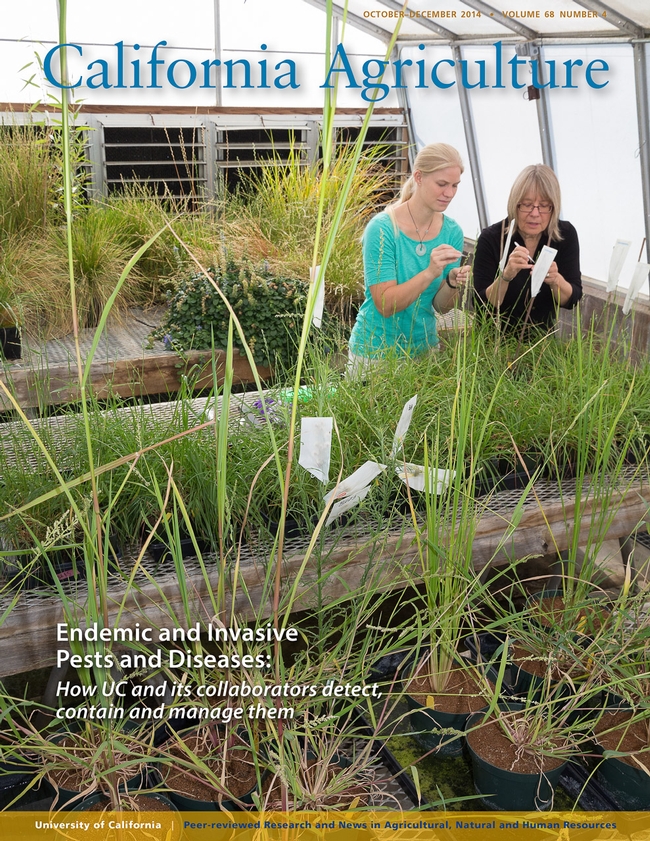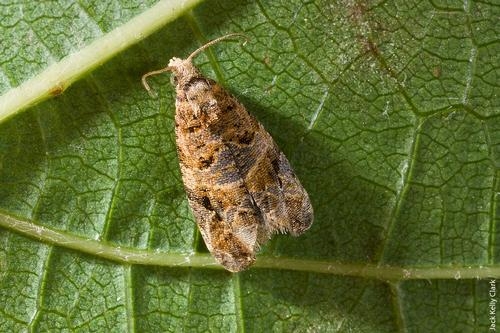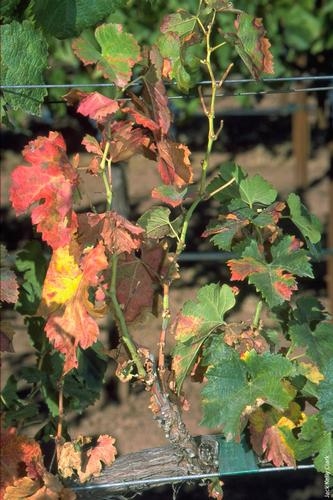
An article in the current issue of California Agriculture, the peer-reviewed journal from the University of California Agriculture and Natural Resources, examines the spread of herbicide-resistant weeds in California and shows how UC researchers and Cooperative Extension specialists are helping growers to understand and manage the factors that drive it.
Five more articles in this special issue of California Agriculture highlight the work of UC Agriculture and Natural Resources on pests and diseases that threaten the state's people, agriculture and natural resources. The commitments to research and outreach profiled in the issue include the Endemic and Invasive Pests Strategic Initiative, the UC Statewide IPM Program and several successful collaborations with regulatory agencies and the agricultural community.

Diagnostics in animal health: How UC helps exclude and minimize impact of livestock pathogens
Whether it's pinkeye, bluetongue or poisonous plants, UC maintains a strong network of laboratories and field experts to protect livestock health in California.
Regional alliances of federal, state and university plant diagnostic labs work together to identify and control disease spread.
Managing newly established pests
Growers, scientists and regulators collaborate on European grapevine moth program
A regulatory program coordinated by government agencies, scientists and growers successfully contained an infestation that threatened California vineyards.

The 1999 arrival in California of a new Pierce's disease vector, the glassy-winged sharpshooter, posed a major new threat to California vineyards and orchards. A 15-year collaborative effort has successfully contained the sharpshooter and led to major improvements in our understanding of the biology of Pierce's disease, including promising advances in the development of disease-resistant grapevine lines.
Maintaining long-term management
Herbicide-resistant weeds challenge some signature cropping systems
Little or no crop rotation and limited herbicide options have contributed to the rise of herbicide-resistant weeds in orchards, vineyards and rice fields.
Over 35 years, integrated pest management has reduced pest risks and pesticide use
The UC Integrated Pest Management Program helps provide management solutions for invasive pests that destabilize IPM programs in agricultural and urban landscapes.
E-edition research article
The cost of the glassy-winged sharpshooter to California grape, citrus and nursery producers
The spread of the invasive insect in the late 1990s led to increased costs and changes in agricultural practices for grape, citrus and nursery producers.
These articles and the entire October-December 2014 issue are available at http://californiaagriculture.ucanr.edu.
California Agriculture is the University of California's peer-reviewed journal of research in agricultural, human and natural resources. For a free subscription, go to http://californiaagriculture.ucanr.edu or write to calag@ucanr.edu.
University of California Agriculture and Natural Resources is the bridge between local issues and the power of UC research. UC ANR's advisors, specialists and faculty bring practical, science-based answers to Californians. Visit ucanr.edu to learn more.
Contact - Managing Editor, California Agriculture